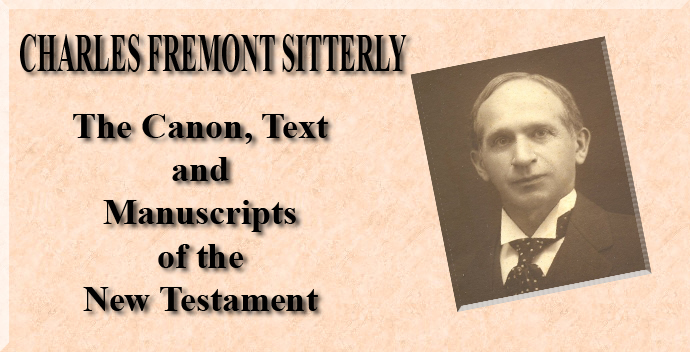
The Canon, Text, and Manuscripts of the New Testament
By Charles Fremont Sitterly
Preface
|
The science of literary criticism attains its climax in the latest text of the Greek New Testament. In this field speculation is now reduced well-nigh to the vanishing point. It is the design of these lectures, which are the irreducible residuum of courses delivered in the Seminary for several years, to traverse rapidly across the centuries the course of the canon of the New Testament. The labored apologetic of a former day as to either the exclusiveness or inclusiveness of the canon itself is relatively of lesser importance, hence the brevity of Part One. As a fourth edition of the author's Praxis in Manuscripts of the Greek New Testament is called for, the same has been incorporated, with but slight change since the last revision, as Part Three of the present work. It is no doubt true that interest in such studies is at the present time somewhat declining, even in our schools of theology, but it is equally clear that the means and method of such discipline must be kept available against the day of inevitable revival, for no biblical theology nor biblical preaching can long survive that does not rest securely on first-hand knowledge of what is written. The wealth of documentary evidence, which the last half century has brought, to the New Testament itself and to the period when it was being written and settled into a canon, is added reason why a group of students should always be in training, to rightly appreciate and appropriate such treasures. The recent discovery in Egypt and purchase by Mr. Charles L. Freer, of Detroit, of one of the foremost uncial MSS. yet found, and now on deposit in the National Capital and known as the Washington MS. of the Gospels, is but an earnest, we trust, of like valuable finds yet in store. Charles Fremont Sitterly. Drew Theological Seminary, Easter, 1914.
|
|
 |
 |
|
|
|
-
Site Navigation
 Home
Home What's New
What's New Bible
Bible Photos
Photos Hiking
Hiking E-Books
E-Books Genealogy
Genealogy Profile
Free Plug-ins You May Need
Profile
Free Plug-ins You May Need
 Get Java
Get Java.png) Get Flash
Get Flash Get 7-Zip
Get 7-Zip Get Acrobat Reader
Get Acrobat Reader Get TheWORD
Get TheWORD